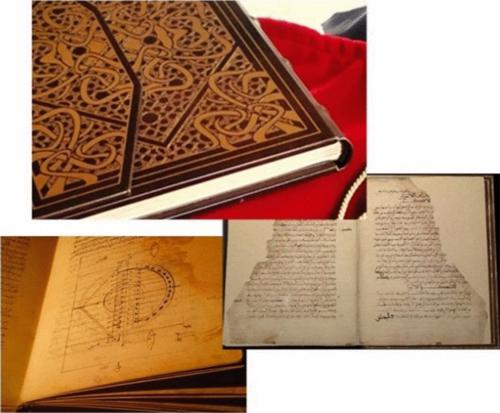Foundations of Science ( IF 0.9 ) Pub Date : 2022-11-21 , DOI: 10.1007/s10699-022-09885-7 G. Medina-Sánchez , J. Moreno-Buesa , R. Dorado-Vicente , R. López-García

|
“The Book of Secrets in the Results of Ideas”, usually called “The Book of Secrets” is a codex containing drawings and descriptions of thirty-one artifacts attributed to the engineer Alī Ibn Khalaf al-Murādī, who lived in Andalusia in southern Spain at the beginning of the 11th century. This manuscript is one of the first written testimonies that describe medieval mechanisms with complex precision. The aim of this work is to reconstruct and study from a historical and technological point of view two of the ancient artifacts contained in the “Book of Secrets”, the “Fortress Demolisher” and the “Magic Well”. The “Fortress Demolisher” is a war machine designed to demolish the upper part of the walls or towers and consists of a battering ram mounted on a platform that can be raised several meters above the ground using a scissor mechanism. The “Magic Well” is a mechanism with several pulleys whose purpose is to raise water several meters from the bottom of a well by collecting a small portion of rope. To reconstruct the two artifacts, a digital model and a detailed study of the geometry and operation of the mechanisms, were first carried out. 3D printing, using the Fused Deposition Modelling technology, made the physical reproduction. The digitization and physical reproduction by 3D printing of the mechanisms represent an update of the traditional ways of transmitting knowledge. The use of these new technologies makes the knowledge more accessible, understandable and attractive.
中文翻译:

《秘密之书》中两种中世纪机制的历史进路与尺度重构
“The Book of Secrets in the Results of Ideas”,通常称为“The Book of Secrets”,是一部手抄本,其中包含 31 件文物的图画和描述,归功于居住在西班牙南部安达卢西亚的工程师阿里·伊本·哈拉夫·穆拉迪 (Alī Ibn Khalaf al-Murādī)在11世纪初。这份手稿是最早以复杂精确度描述中世纪机制的书面证词之一。这项工作的目的是从历史和技术的角度重建和研究“秘密之书”中包含的两个古代文物,“堡垒破坏者”和“魔法井”。“堡垒拆除者”是一种战争机器,旨在拆除墙壁或塔楼的上部,由安装在平台上的攻城锤组成,该平台可以使用剪刀机构升高到离地面几米的高度。“魔法井”是一种带有多个滑轮的装置,其目的是通过收集一小部分绳索将水从井底提升到几米处。为了重建这两个工件,首先进行了数字模型和对机制的几何结构和操作的详细研究。3D 打印,使用熔融沉积建模技术,进行物理复制。通过3D打印对机制进行数字化和物理复制,代表了传统知识传播方式的更新。这些新技术的使用使知识更易于获取、理解和吸引。首先进行了数字模型和对机制的几何结构和操作的详细研究。3D 打印,使用熔融沉积建模技术,进行物理复制。通过3D打印对机制进行数字化和物理复制,代表了传统知识传播方式的更新。这些新技术的使用使知识更易于获取、理解和吸引。首先进行了数字模型和对机制的几何结构和操作的详细研究。3D 打印,使用熔融沉积建模技术,进行物理复制。通过3D打印对机制进行数字化和物理复制,代表了传统知识传播方式的更新。这些新技术的使用使知识更易于获取、理解和吸引。











































 京公网安备 11010802027423号
京公网安备 11010802027423号